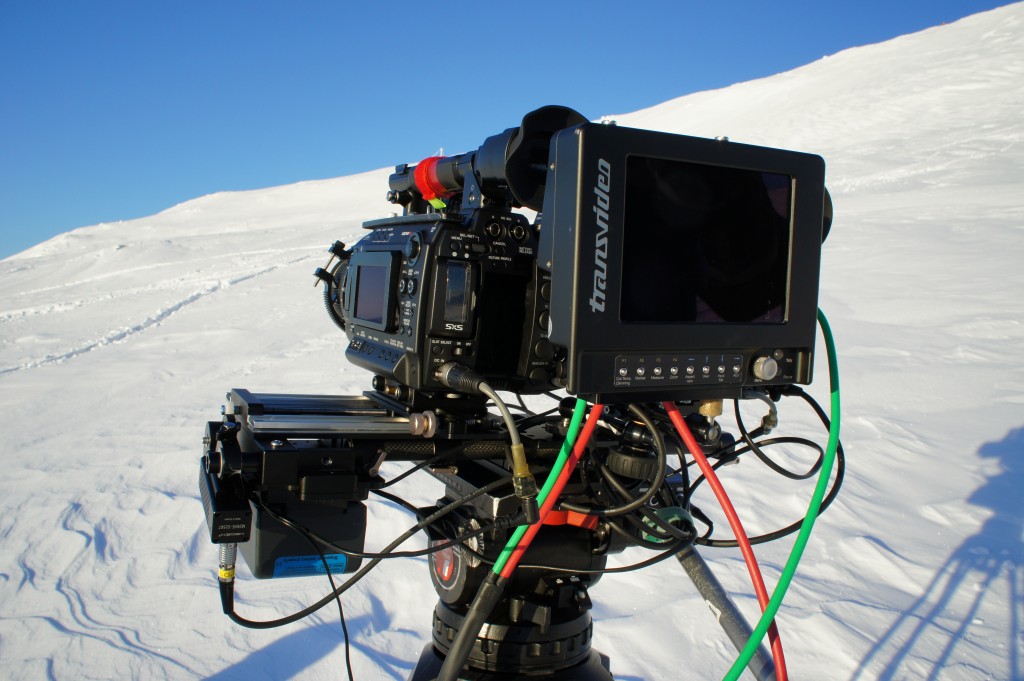Alister Chapman - CineMonitorHD 3DView
|
I’ve just returned from a very enjoyable week shooting 3D with Geoff Boyle in the Swedish mountains. We were in Hemavan, running a 3D workshop using a wide range of cameras including Sony F3′s on a Hurricane Rig, a TD300 and an NEX3D1E. The shooting parts of the course took place up in the mountains where at times we had to deal with temperatures below -20°C, howling winds and blizzard conditions. Our primary monitors were Transvideo 3DView, a 6″ Classic and a 10″ Evolution. These were the perfect monitors for this type of shoot where we needed portability, ruggedness and the superb 3D toolsets incorporated into these monitors.
When conditions are like this, portability and ruggedness are paramount!
One the first day of the shoot, all of the equipment had to be hand carried through snow that was waist deep, the second day our only transport was snow scooters. Bigger, bulkier monitors were out of the question. While the monitoring options on the built in LCD of the Sony TD300 are quite good, it’s just much too small to correctly see the disparity between the left and right views accurately. This is where the Transvideo’s excel. The Transvideo difference modes and zoom function, combined with the adjustable disparity grid makes accurate assessment of the stereoscopic image straight forward and easy. This was especially useful on this shoot as it was very easy to show the students exactly how different camera settings and interaxial’s affect the 3D image. |
I’ve been lucky enough to have used a wide range of 3D monitors over the last few months from many manufacturers. They have ranged from un-useable to quite good, but none have come close to the Transvideo’s. Current monitors with small polarised screens (less than 20″) are completely useless as on set monitors because the resolution drop caused by using alternate lines for the left and right images makes accurate alignment very hard, in fact you can be 3 pixels out and it’s all but impossible to see. Monitors that only have SD, low resolution or composite inputs are also of little use, as again you can’t see your alignment. So, while there may be cheaper 3D location monitors on the market, my recommendation will always be for a Transvideo monitor. They are in my mind simply the best tools for the job.
Read full article here.
Alister Chapman Stereographer and Filmmaker |

